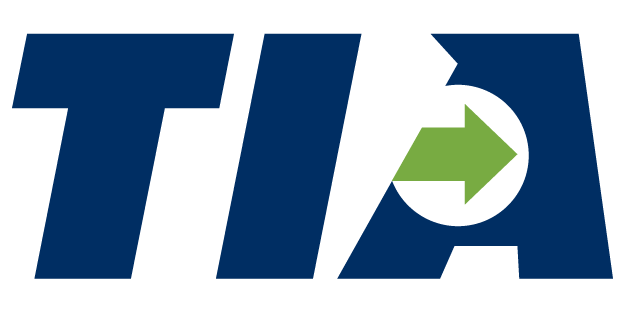Issue 121
Advanced Notice of Proposed Rulemaking (ANPRM) on Safety Fitness Determination
Methodology for Motor Carriers
The Federal Motor Carrier Safety Administration (FMCSA) is considering the development of an updated process for determining the safety fitness of motor carriers to operate commercial motor vehicles (CMVs) in or affecting interstate commerce. This report summarizes an Advanced Notice of Proposed Rulemaking (ANPRM) issued by the FMCSA to gather public input on various aspects of this proposed methodology. You can find the ANPRM in its entirety HERE.
Currently, Safety Fitness Determinations (SFDs) are based on an analysis or audit of existing motor carrier data and data collected during compliance reviews (CRs) – these are the safety audits performed usually in person by FMCSA staff. This ANPRM wants feedback on numerous areas, including the need for revising regulations, available scientific or technical information for analyzing regulatory alternatives, the current SFD process, available data and costs, and specific questions about potential changes.
Current Safety Fitness Determination Process: The existing SFD process involves analyzing six safety categories, each corresponding to different regulations:
- General
- Driver
- Operational
- Vehicle
- Hazardous Materials (HM)
- Accident factor
FMCSA assigns points for noncompliance, and based on these points, carriers receive conditional, satisfactory, or unsatisfactory ratings. TIA would like to see a red light or green light rating to avoid the current ambiguity of these safety audit ratings (conditional, satisfactory, unsatisfactory).
Challenges with Current Process: The current SFD process is resource-intensive and reaches only a small percentage of carriers due to limitations on resources – 92% of carriers are unrated making the carrier selection process even more confusing. Additionally, the process does not effectively pull in all available safety data from the Motor Carrier Management Information System (MCMIS).
Discussion and Questions: FMCSA seeks public input on various aspects of the proposed methodology, including:
- Retaining the current three-tiered rating system or transitioning to a single determination of "Unfit." This is where TIA would like to see a simple red light, green light approval system.
- Including additional Hazardous Materials regulatory requirements in the SFD calculation.
- Considering higher safety standards for motor carriers of passengers.
- Incorporating driver behavior data into the SFD.
- Impact on states and necessary resources for changes.
- Integration of on-road safety data into the SFD process.
- Incorporating safety technologies in the SFD methodology.
- Revising administrative review procedures.
- Giving more weight to unsafe driving violations.
- Addressing the correlation between unsafe driving behaviors and crash risk.
The FMCSA's ANPRM seeks public input on developing a new methodology for determining motor carrier fitness. The proposed changes aim to improve the effectiveness and efficiency of identifying and addressing unfit carriers to enhance overall road safety. TIA’s Highway Logistics Conference Committee will review the ANPRM and develop comments that fit the policy positions developed by the Association.
Biden’s New Labor Advisor:
Former union leader Brendan Danaher has been chosen by President Joe Biden to take on a key labor advisory role within the White House. Danaher has been appointed as the deputy director of the National Economic Council (NEC) for labor and economy, succeeding Celeste Drake. Drake recently left to serve at the International Labor Organization. Working alongside Erika Dinkel-Smith, who focuses on labor matters at the White House's Office of Political Strategy and Outreach, Danaher's wealth of experience in government and the labor movement is expected to be a valuable asset to the NEC.
Brendan Danaher had previously advised the Biden transition on transportation matters and subsequently became a labor policy adviser at the Department of Transportation in late 2021. He officially transitioned to the NEC from the Department of Transportation, where he had held the role of labor policy adviser. Danaher's background includes leadership positions within the Transport Workers Union, including executive director, and previous work at the Transportation Trades Department of the AFL-CIO.
The appointment comes at a time when President Biden is navigating significant negotiations between the United Auto Workers and major automakers, as well as an uptick in strike activity across the nation. Gene Sperling has been designated to handle the UAW negotiations. Danaher will collaborate with Sperling in this capacity, while also working with acting Labor secretary Julie Su and other officials to address labor-related issues. The Labor Department has been functioning without a confirmed top official since March, as Senate confirmation hurdles persist for Biden's appointees in a closely divided chamber.
IRA Stimulates Projects Nationwide and Skepticism:
President Joe Biden's Inflation Reduction Act (IRA), aimed at spurring clean energy investment, has stirred a variety of reactions across rural America, particularly among conservatives. The $370 billion worth of federal tax incentives meant to boost renewable energy and electric vehicle development has been met with mixed feelings. While some communities welcome the boost in jobs and investments, others are wary of the perceived reach of the Chinese government and businesses due to these incentives.
The IRA is creating a dilemma for conservatives. While Republicans have often criticized the law as an overreach of big government and a threat to fossil fuels, the benefits of the incentives are often disproportionately reaching Republican-held districts. This dynamic is altering the political landscape, potentially softening the perception of President Biden in these areas as he seeks re-election.
Several locations across the U.S. are seeing the impact of the IRA:
- Michigan: The state is experiencing controversies over a planned battery component manufacturing facility by Gotion, a Chinese-affiliated company. Concerns are centered on China's influence and potential environmental issues.
- Oklahoma: Despite being a conservative stronghold, Oklahoma is benefiting from IRA incentives. Companies like Enel and Canoo are investing in the state, creating jobs and growth.
- New York: The Hudson Valley is seeing an industrial revival with the IRA incentives attracting Zinc8 Energy Solutions, a Canadian company planning to manufacture batteries for electric vehicles and electric grids.
Despite the ideological opposition to government intervention, the incentives have shown how economic interests can sometimes outweigh political rhetoric. The debate highlights the broader challenges and nuances surrounding clean energy policies, especially when they intersect with regional economies, political affiliations, and geopolitical concerns about China's role.
The non-political, often centrist critics argue that we continue to develop and use alternate forms of energy – whether it be for automobiles or day-to-day electricity – while also realizing that an overnight shift away from fossil fuels is not realistic. Both must co-exist. As energy forms become increasingly more innovative the people will make their energy choice according to present circumstances.
If you have any questions about this newsletter or TIA 2023
Policy Forum, please email [email protected]
TIA 1900 Duke Street STE 300 Alexandria, Virginia 22314 US
Want to change what emails you receive from us? Update your preferences.















